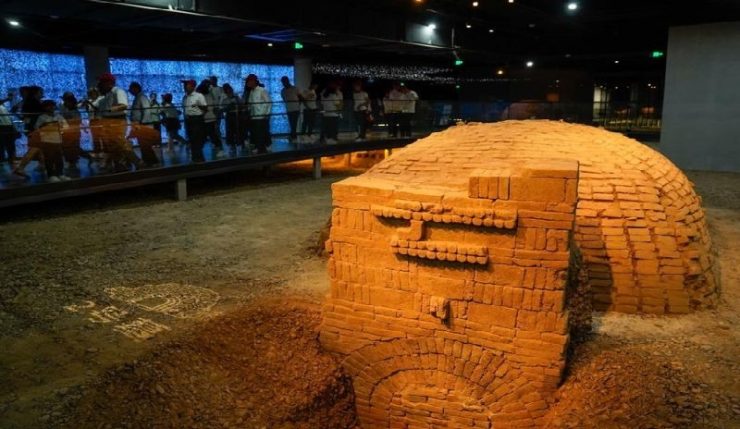AN UNDERGROUND museum of ancient tombs from the Wei Dynasty and Jin Dynasty (220-420) opened on Monday (July 15) in Kuqa, an area that used to be part of Qiuci State, one of the countries of the ancient Chinese era, in northwest China’s Xinjiang Uyghur Autonomous Region.
Qiuci State, which was founded in the second century B.C. and existed for more than 1,000 years, was one of the 36 states of the Western Regions, a term used in the Han Dynasty (206 B.C. – 220 A.D.) for the region west of the Yumen Pass, including present-day Xinjiang and some areas of Central Asia.
The 5,000-square-meter museum was built to protect 15 brick burial chambers discovered in 2007 during the construction of the Youyi Road subway. The discovery was one of China’s 10 new archaeological discoveries at the time.
The tomb complex was built similarly to Han Dynasty-style brick chamber tombs found in central China and along the Hexi Corridor, a nearly 1,000-kilometer corridor in northwest China’s Gansu Province that is home to five UNESCO World Heritage Sites and 53 caves.
The museum makes full use of the original appearance of the tomb, as well as digital exhibits, virtual reality (VR) technology and touch screens to provide visitors with an immersive experience of ancient Qiuci. [antaranews/photo special]
















